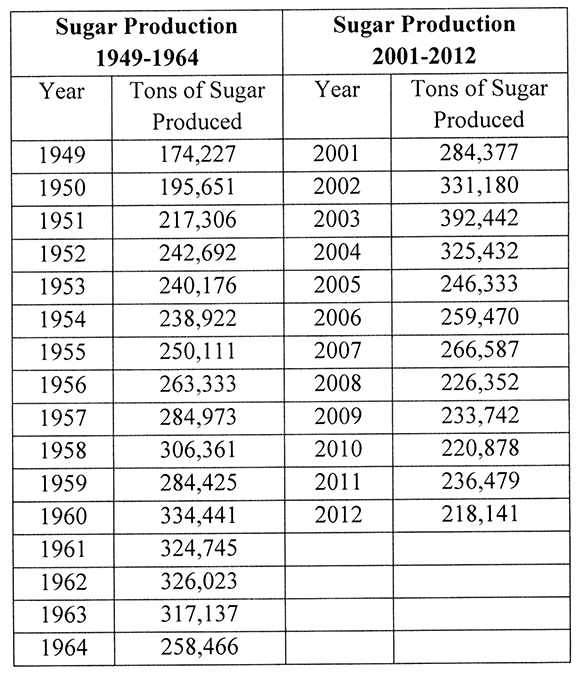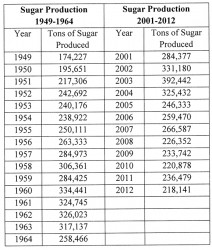Dear Editor,
I just recently received what I consider a timely and valuable gift in the particular circumstances surrounding today’s sugar industry.
It is a copy of a reprint from the now extinct New World magazine, a highly respected intellectual publication of its time, with which David de Caires and several local and West Indian scholars were associated.
The title of the lone article published is ‘Sugar in B.G. – Challenge and Change,’ by none other than Ian McDonald, in 1965, and to whom I must pay the utmost respect and thanks for his contribution, and
particularly with respect to the statistics provided of which actual production (as reproduced below) might be of primary interest to sugar watchers who may wish to draw relevant comparisons with current production indices.
Contemporaries of my generation, particularly those who were new managers in the sugar industry in the sixties, would recall the industrial unrest of 1962-1964, much of it targeted at the sugar industry. And yet note the production achieved.
But what is most interesting is the following comment by Ian:
“The sugar companies have again decided, in the face of many hard financial difficulties, to aim for a further basic expansion of 60,000 tons of sugar (of which a large part will be expected to come from cane farmers) by 1969. This would lift B.G.’s production up to 380,000 tons in an average year and 400,000 tons in a good year. This is the aim.” Merely to say that an honest review of these numbers must make one wonder why Skeldon was at all necessary.
Yours faithfully,
EB John


